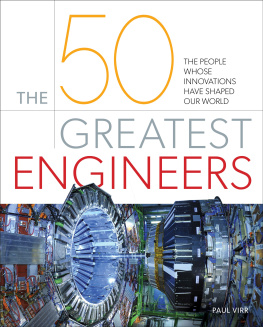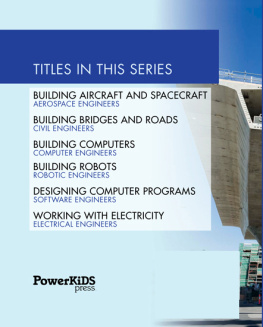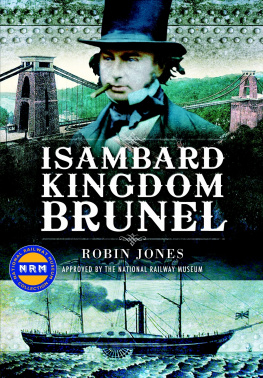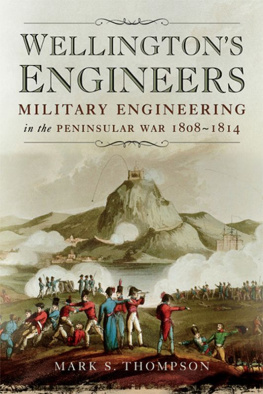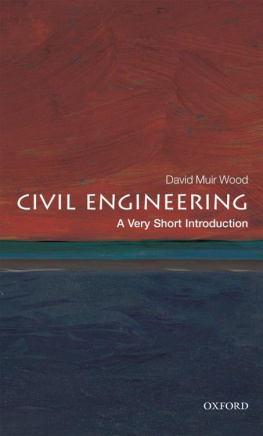
INTRODUCTION
W hen you hear the word engineering, perhaps the first images that spring to mind are feats of construction, such as iconic bridges, buildings or vehicles. But beyond these showcase achievements lies a more general truth: engineering is everywhere in the human world. From towering skyscrapers and the Large Hadron Collider (a vast scientific instrument that is the largest machine in the world), right down to the invisibly small circuits on silicon chips and microscopic carbon nanotubes, our world, the human world that we inhabit, has all been engineered. This book tells the stories of just a selection of engineers who have contributed to the construction of this world.
Before we meet some of these engineers, it is worth examining the work that they do, even to ask the basic question: what is engineering? Engineering is a word often preceded by a qualifying term, such as civil, structural or mechanical, just to name a few. This array of specialisms reveals how wide the field is. However, one thing that all engineers have in common is that they provide practical solutions to real-world problems. Their solutions are often physical structures and machines, but can also be less tangible, such as processes to turn raw materials into useful products, or to transform data into meaningful information.
To unpack the idea of engineering further, we can say that engineers supply the means to meet all kinds of human needs. While evolution has shaped all living things to suit the conditions they live within, we humans have a unique set of skills that have allowed us a greater degree of control over the natural environment. We have used our intelligence to make tools and with these we have shaped the world to suit us. Perhaps we can consider our prehistoric ancestors, who fashioned stone hand-axes from flint to be the first engineers. From their first, basic tools through to simple machines, such as levers, pulleys and the wheel, we can trace the foundations of the engineering that has finally led us to the modern world where humans are the dominant species on the planet. The everyday infrastructure that surrounds us today is the cumulative result of engineering history. If you stop to consider any of the things you use every day, you are sure to find it has a fascinating engineering back story.

The Large Hadron Collider at CERN, a marvel of modern engineering.

Filippo Brunelleschis dome for Santa Maria del Fiore was one of the crowning feats of Renaissance engineering.
Not all engineers are pioneers, nor are they always scientists and inventors, though history has plenty of examples of engineers who have encompassed all these roles. Engineers often build on the work of others, combine or refine existing inventions to deliver an engineered product. Hand-in-hand with scientific discoveries, engineers have applied science to the practicalities of everyday life. This is why the engineering story has been particularly rich and varied during periods of intense scientific advances, such as the Renaissance and the Industrial Revolution.
We have chosen 50 engineers that represent some of the key engineering achievements from ancient to modern times. With a subject as vast as engineering we have had to be necessarily selective. It is only relatively recently that more of the achievements of women engineers are being revealed from the archives. It is to be hoped that their successes and those of all the other engineers in this book will prove inspirational. Now, perhaps more than ever, humankind needs engineers to face the challenges of the future, particularly the effects of climate change. They may deploy new skills, such as robotics and artificial intelligence, but they will be finding solutions to problems and making their ideas reality, just the same as all the engineers you will meet here.
IMHOTEP
FROM THE HEIGHTS OF THOSE PYRAMIDS, FORTY CENTURIES LOOK DOWN UPON US.
Napoleon Bonaparte, 1798

A statuette of Imhotep from the 7th century BCE.
GREATEST ACHIEVEMENTS
PYRAMID OF DJOSER, SAQQARA Completed c. 2650 BCE, it was the first step pyramid and one of the earliest examples of monumental architecture.
O f the Seven Wonders of the Ancient World, only the Great Pyramid of Khufu is still standing today. It is the largest of more than one hundred pyramids that were built as tombs for the pharaohs who ruled ancient Egypt. Exactly how these colossal funeral monuments were built is still the subject of lively debate among Egyptologists, engineers and experimental archaeologists. But one thing the experts all agree on is that these ancient structures are a testament to the skills of the early engineers that built them.
The pyramids and temples of ancient Egypt have immortalized the names of the rulers who commissioned them, but they have also ensured that the names of at least some of the pyramid builders have not been forgotten. A handful of statues and inscriptions have survived and they give us a tantalizing glimpse of some of these early civil engineers the first in recorded history. Foremost among the early pyramid builders was Imhotep. He was the vizier for Djoser, one of the first kings of the Third Dynasty. As the pharaohs most senior official, Imhotep was responsible for the day-to-day running of the kingdom, but he also managed all the royal building works. It was in this role that Imhotep built the first pyramid, more than 4,600 years ago, at Saqqara.
Unlike the later pyramids at Giza, which have flat sides rising from a squarish base to the apex, this very first pyramid was a stepped structure made from tiers of progressively smaller platforms. It stood at the centre of a huge funerary complex commissioned by Djoser, which was just part of an ambitious building programme that extended throughout his kingdom. As the location of ceremonies that celebrated his coronation, Djosers tomb was the pinnacle of a series of architectural statements that reflected and cemented his living power.

Despite centuries of wear, the stepped structure of the Pyramid of Djoser at Saqqara remains clearly visible today.

The Hypostyle Hall built by Imhotep as part of the Saqqara necropolis surrounding Djosers pyramid.
The Saqqara Step Pyramid that Imhotep designed and built was a revolutionary structure the worlds first large building built from stone. Prior to this, all the buildings in ancient Egypt had been built from mud-brick, reeds and wood. The pyramid also marked a radical change in the way the funeral monuments of ancient Egypts rulers were built. The tombs of earlier pharaohs were flat-roofed, rectangular buildings called mastabas. They stood about 9 m (30 ft) high with flat roofs and sloping walls made of mud-brick. Imhotep broke away from tradition and built a royal tomb from limestone blocks on a much more imposing scale.

